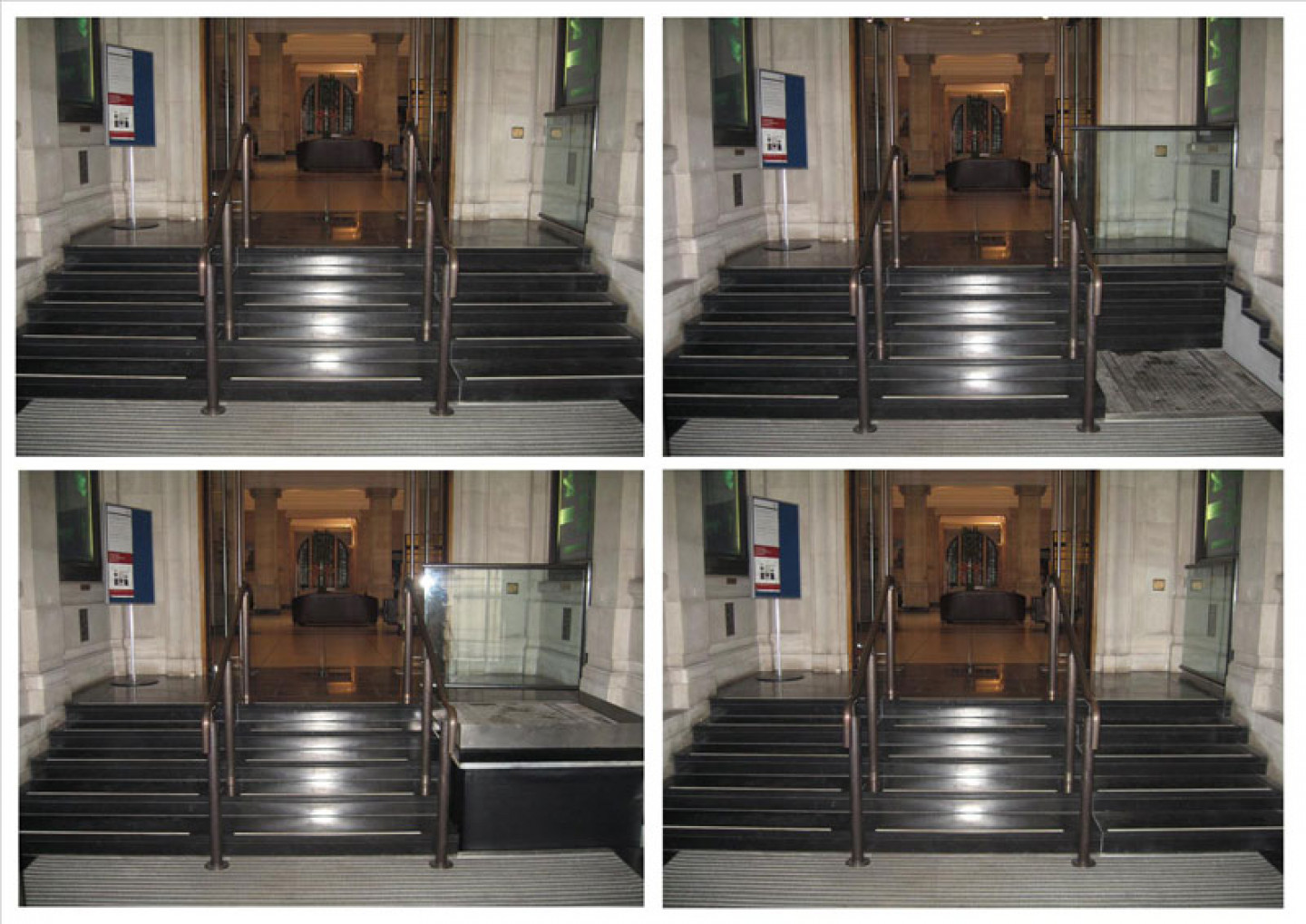The Institute is housed in a listed building in Central London and in order to meet the requirements of the Disability Discrimination Act needed to find a solution for wheelchair users to gain entrance over the stairs leading from the street to their reception area and then over a further short rise set of stairs within the building. Given the technical expertise of the many visitors to the Institute, the unique engineering concept of the Sesame System was very appealing as it offered to them a practical solution that was also very much in keeping with the professionalism of the Institute's membership. As seen in the photograph the Sesame fitted to the external entrance is clad in Limestone and once this is weathered it will fully blend into its surroundings as there are only 6mm gaps bounding the moving parts and static area. A further feature of this installation is that the control button box rises from below the stair lift when the stairs retract.
The internal Sesame System is clad in marble to match the surrounds and the option of a swinging gate has been chosen rather than the rising barrier. Again like the external lift it has been fitted with a rising control button box when the lift is called but whilst the Sesame is in stair mode for pedestrian use the box is fitted into the wall to make the System anonymous and blended totally with the surrounding area.
The following is a quote from the Institute of Civil Engineers own web site:
“The two lifts are not visible on immediate inspection - with the push of a button the stairs retract and reveal a platform that takes the passenger to the next level. We are extremely proud of this new addition and it shows that even buildings in architecturally sensitive areas can be updated to provide access for all!”
